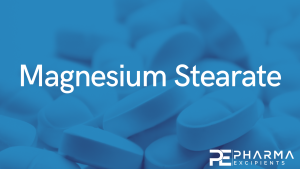The Development of Oral Solid Dosage Forms Using the Direct-Compression Tableting of Spray-Dried Bacteriophages Suitable for Targeted Delivery and Controlled Release

Abstract
This study addresses the challenge of developing a cheap, patient-friendly alternative to antibiotics using bacteriophages for gastrointestinal applications. It explores the feasibility of manufacturing an enteric solid dosage form containing a salmonella-specific Myoviridae phage, Felix O1, encapsulated in spray-dried trehalose/Eudragit microparticles. The spray-dried powder was further formulated by combining the spray-dried microparticles with magnesium stearate to facilitate the fabrication of tablets using direct compression. The paper presents a comprehensive evaluation of the tablets with measurements of phage viability during tablet fabrication using a range of compression settings and, after tablet disintegration, dissolution and friability. Phage viability measurements were performed using storage stability testing of spray-dried powders and tablets in sealed vials at 4 °C, 20 °C and 30 °C and under different humidity conditions of 0%, 50% and 65% RH. The recommended compression force range was found to be 10–15 kN for a standard 10 mm diameter tablet. The storage of tablets at 4 °C/0% RH was found to be the most favourable condition resulting in a ~1 log loss in titre over a six-month storage period. Storage at higher temperatures and samples exposed to high levels of humidity resulted in a significant loss in phage viability. The paper highlights challenges in developing phage formulations suitable for direct-compression tableting, which afford the phages protection when exposed to temperatures and humidity levels that do not require a cold supply chain
Introduction
The increasing proliferation of multi-drug resistance in Gram-negative pathogenic bacteria poses a significant global challenge both clinically and within the agricultural supply chain. It also presents problems in disaster-stricken and war-torn areas, where vaccination programmes and conventional logistics, such as a cold supply chain are not feasible. Effective low-cost prevention strategies, such as those utilising the specificity of bacteriophages for prophylactic treatment, may hold considerable promise in such situations [1,2,3,4,5].
Promising recent studies on using bacteriophages to combat Pseudomonas aeruginosa have used dry powder inhalers, topical applications and enteric-coated tablets as drug delivery routes [6,7,8,9], improving on the vial-based methods of storage and administration previously used. The jump from the very limited vial-based systems to dry powder systems has been facilitated by encapsulating the phages within a sugar matrix using spray-drying; the amorphous sugar performs many of the tasks normally provided via water and enables fully stable phages to exist as part of a dry powder. A logical development from these studies is to examine the efficacy of using phages delivered using conventional tablets produced using direct compression, which poses a number of challenges. The phages need to be stable in the formulation in the absence of a cold supply chain [10]. Bacteriophages may also encounter chemical and physical stresses during processing which may be detrimental to phage activity, resulting in loss of potency. The formulation of phages needs to ensure the reliable delivery of high doses of phages at the site of infection and afford protection to phages, which are susceptible to stomach acid and proteolytic damage during transit through the gastrointestinal tract [11]. The process of manufacturing oral dosage forms needs to be scalable and relatively low-cost [12].
The spray-drying of bacteriophages is increasingly recognised as a low-cost and scalable process technology for manufacturing phage drug products in a suitable dry powder form. It has previously been shown that the spray-drying of bacteriophages using formulations containing the sugar trehalose and a pH-responsive synthetic polymer may allow high encapsulation yields, affording phage acid stability and allowing pH-triggered release in a controlled manner in response to changes in environmental pH, such as in the digestive tract [13,14]. It has also previously been demonstrated that encapsulated phages survive the process of direct compression and can be processed into tablets which are superior in terms of acid protection compared with powders [13]. Tablets are the preferred form of oral delivery, as they have a high level of patient acceptability and compliance. They provide an easy means of accurate dosage and are simple to administer. Direct compression is a simple method for making tablets; however, several factors need careful consideration for the successful manufacture of phage-encapsulated tablets which heretofore have not been systematically evaluated in the literature. The aim of the present study was to spray-dry a Salmonella-specific phage (the Myoviridae phage Felix O1) using two different pH-responsive polymers, Eudragit L100® and S100®, thereby allowing the potential targeting and controlled release of encapsulated phages either in the upper or the lower intestinal tract, respectively. The effect of different compression forces used to fabricate the tablets on phage viability, tablet disintegration and friability were evaluated. The resistance to acid exposure and storage stability of the encapsulated phages in the powders and tablets were evaluated. The role of residual moisture in the spray-dried powders and its effect on phage viability during storage were investigated in order to improve phage drug product stability in the absence of a cold supply chain.
Download the full article as PDF here The Development of Oral Solid Dosage Forms Using the Direct-Compression Tableting of Spray-Dried Bacteriophages Suitable for Targeted Delivery and Controlled Release
or read it here
Following excipients are mentioned in the study besides other: Eudragit L100® and S100®,
Yazdi, Z.R.; Leaper, M.C.; Malik, D.J. The Development of Oral Solid Dosage Forms Using the Direct-Compression Tableting of Spray-Dried Bacteriophages Suitable for Targeted Delivery and Controlled Release. Processes 2023, 11, 3146. https://doi.org/10.3390/pr11113146
Read more on Introduction to Magnesium Stearate as a pharmaceutical excipient here:


